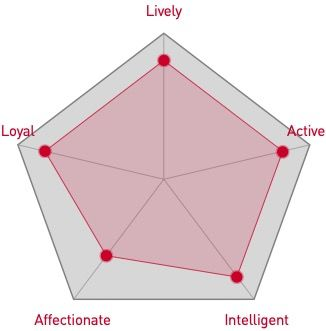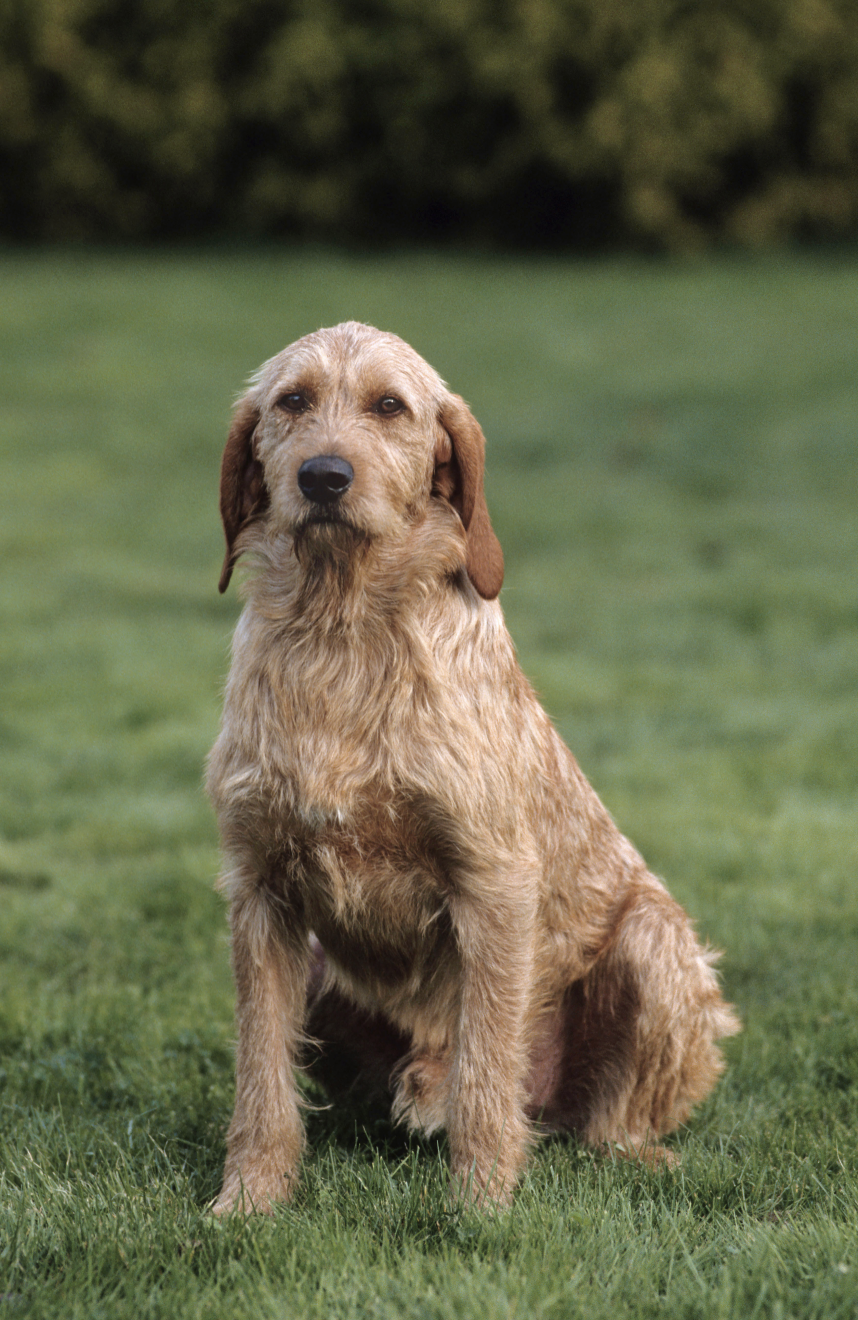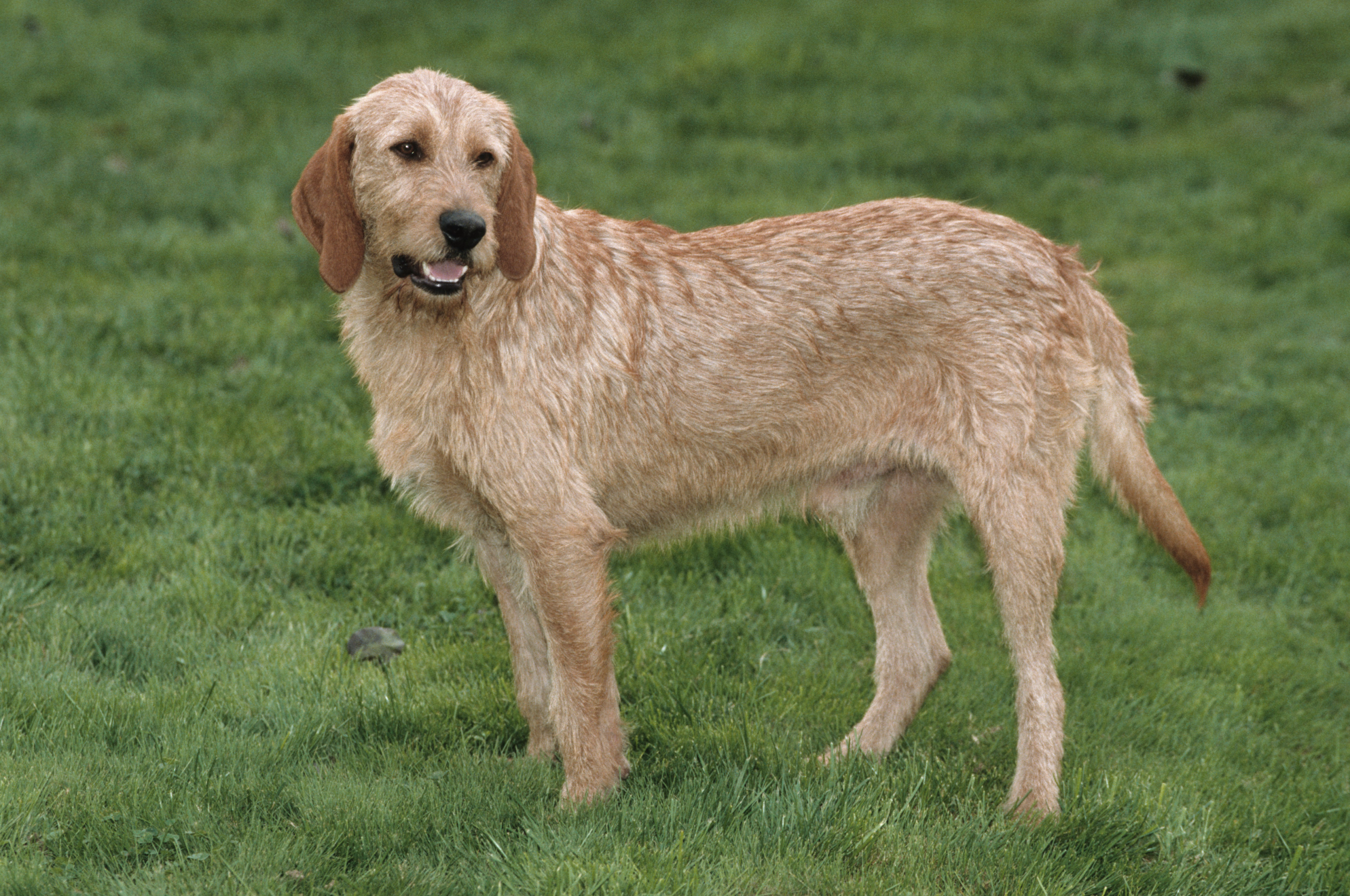
Let's talk Griffon Fauve de Bretagne dogs
Despite their rather compact size, the Griffon Fauve de Bretagne breed is chock-full of big dog energy. Their highly active, working history – back in the 13th century, they were bred to hunt – is still in their DNA, so your Griffon Fauve de Bretagne is most content frolicking in the outdoors. Once that energy is burned off though, they are incredibly mellow dogs, with a loving, sociable nature, equally at home meeting new people as hanging out with their human family.Official name: Griffon Fauve de Bretagne
Other names: Fawn Brittany Griffon
Origins: France

| Drooling tendencies |
|
Warm weather? |  |
| Shedding level |  |
Suited to apartment living? |  |
| Physical activity needs (high, low, medium): | Moderate | Family pet?* |
 |
| Compatibility with other pets |  |
Can stay alone?* | 
|
* We advise against leaving pets alone for long stretches.
Companionship can prevent emotional distress and destructive behaviour. Speak to your veterinarian for recommendations.
Every pet is different, even within a breed; this snapshot of this breed specifics should be taken as an indication.
For a happy healthy and well-behaved pet, we recommend educating and socialising your pet as well as covering their basic welfare, social and behavioural needs.
Pets should never be left unsupervised with a child.
Contact your breeder or veterinarian for further advice.


| Baby age | Birth to 2 months |
| Puppy age | 2 to 12 months |
| Adult age | 1 to 7 years |
| Mature age | 7 to 10 years |
| Senior age | 10 years onwards |

1/7
Get to know the Griffon Fauve de Bretagne
All you need to know about the breed
Their teddy bear-like appearance is a clear indication of the Griffon Fauve de Bretagne breed’s personality: affectionate, upbeat, easy-going ... and always ready to snuggle up next to you after a long stroll outside, one during which they burn off their high energy. The Griffon Fauve de Bretagne are very intelligent dogs, meaning sometimes a mischievous streak can surface, but they are also very much people pleasers at their core.
The Griffon Fauve de Bretagne boasts incredible stamina, making them excellent jogging companions for the active owner. Since their working background is not too far behind them, the Griffon Fauve de Bretagne dog’s prey instinct is still strong, and this can distract them from listening to their owner. However, not to worry—as long as you practice consistent, patient and positive training techniques, these behaviours can be deterred early on.
What stands out most about the Griffon Fauve de Bretagne is their ability to integrate beautifully within any family setting, especially with children once trained. They are pretty exceptional with kids of all ages thanks to their combination of boisterous energy and overall gentleness—much like kids themselves.

2/7
2 facts about Griffon Fauve de Bretagne dogs
1. Descendent of a now extinct breed
Before the Griffon Fauve de Bretagne, there was the Grand Fauve de Bretagne. If you are familiar with the latter, you might notice they were taller than the version we know today. After almost being pushed to extinction, Marcel Pambrun founded the Club de Fauve de Bretagne in 1949, to save and increase the species numbers of the Griffon Fauve de Bretagne breed around France.
2. Which Fauve de Bretagne?
While they might share similar names and physical characteristics, the Griffon Fauve de Bretagne, the Grand Fauve de Bretagne, and the Basset Fauve de Bretagne breeds are all distinct breeds. And if you were curious–none of these breeds share a connection with the early 20th century Fauvism art movement.
History of the breed
Dating back to the 13th century, the Griffon Fauve de Bretagne breed has been documented as one of the oldest scent hounds in the northwest region of France, now known as Brittany. However, back in the Mediaeval period, Brittany was its own independent kingdom governed by the Dukes of Brittany, who, like many other aristocratic figures, loved spending much of their pastime hunting for game. Their sharp sense of smell made the Griffon Fauve de Bretagne a celebrated hunting dog, to the extent that when Francis I succeeded in unifying Brittany and France, the king appointed the Griffon Fauve de Bretagne as his official dog.
However, the Griffon Fauve de Bretagne breed’s period of royal acclaim came to a sudden halt when their services were deemed unnecessary in the 19th century. After being on the edge of extinction, a breeding program was introduced in the 1940s to save this affable and personable breed, which thereafter increased their notoriety around France again.
The Griffon Fauve de Bretagne was recognised by the United Kennel Club in 1996. The American Kennel Club added the Griffon Fauve de Bretagne breed to its Foundation Stock Service in 2015.

4/7
From head to tail
Physical characteristics of Griffon Fauve de Bretagne dogs
1. Coat
Coat is long, smooth and slightly coarse.
2. Ears
Long, floppy ears that fall below the muzzle.
3. Body
Broad and muscular body with a deep chest.

5/7
Things to look out for
From specific breed traits to a general health overview, here are some interesting facts about your Griffon Fauve de Bretagne

6/7
Caring for your Griffon Fauve de Bretagne
Grooming, training and exercise tips
Due to their short but very dense coat, the Griffon Fauve de Bretagne should be brushed several times a week with a stiff bristle brush to avoid tangles. That's it: Their coarse coat is pretty dirt resistant. Nails should be clipped, and teeth brushed daily. A visit to the groomers every month will keep your Griffon Fauve de Bretagne looking and feeling their best. When it comes to exercise, the Griffon Fauve de Bretagne has a great appetite for outdoor activity. One to three hours a day is optimal, so make sure to prioritise at least one long and vigorous stroll in the park or forest throughout the day. Like other sporting dogs, the Griffon Fauve de Bretagne can come off as strong-minded, meaning they can be a bit rebellious when confronted with instructions. However, as long as you start training them from a young age, with as much patience and positivity as possible, their desire to please their humans will work in your favour. Take any treats used to training out of their daily kibble portion to ensure your Griffon Fauve de Bretagne stays trim.7/7
All about Griffon Fauve de Bretagne dogs
Other canines —yes please! The Griffon Fauve de Bretagne breed is used to being part of a pack and harmonises well with other dogs. In fact, they thrive in company and can sometimes get anxious if left alone. However, unfortunately, smaller household pets such as cats or rodents might provoke their prey drive.
Not usually. Although they are not afraid to bark if they feel that they, or their family pack, are being threatened in any way, the Griffon Fauve de Bretagne breed is rarely aggressive. In fact, they are known to be relatively social and friendly, even towards strangers. They’re no optimal guard dog!
translations.feature.breeds.otherbreeds
Read more on this topic

How your dog's nutrition needs change with age

How to adopt a dog

Things to consider before getting a dog
Sources
1 - Veterinary Centers of America https://vcahospitals.com/
2 - Royal Canin Dog Encyclopaedia. Ed 2010 and 2020
3 - Banfield Pet Hospital https://www.banfield.com/
4 - Royal Canin BHN Product Book
5 - American Kennel Club https://www.akc.org/



